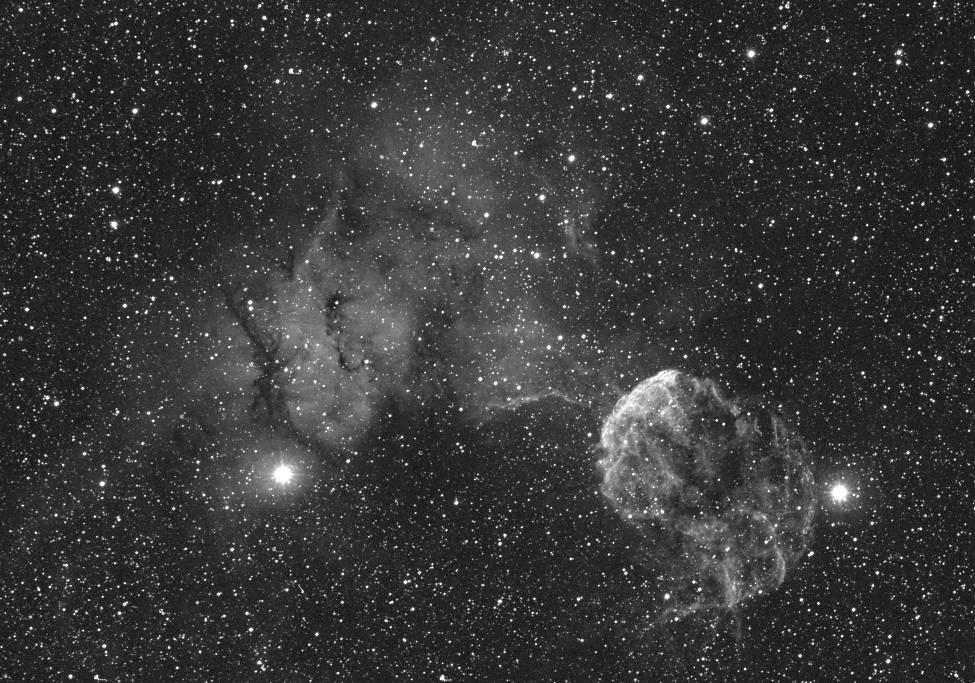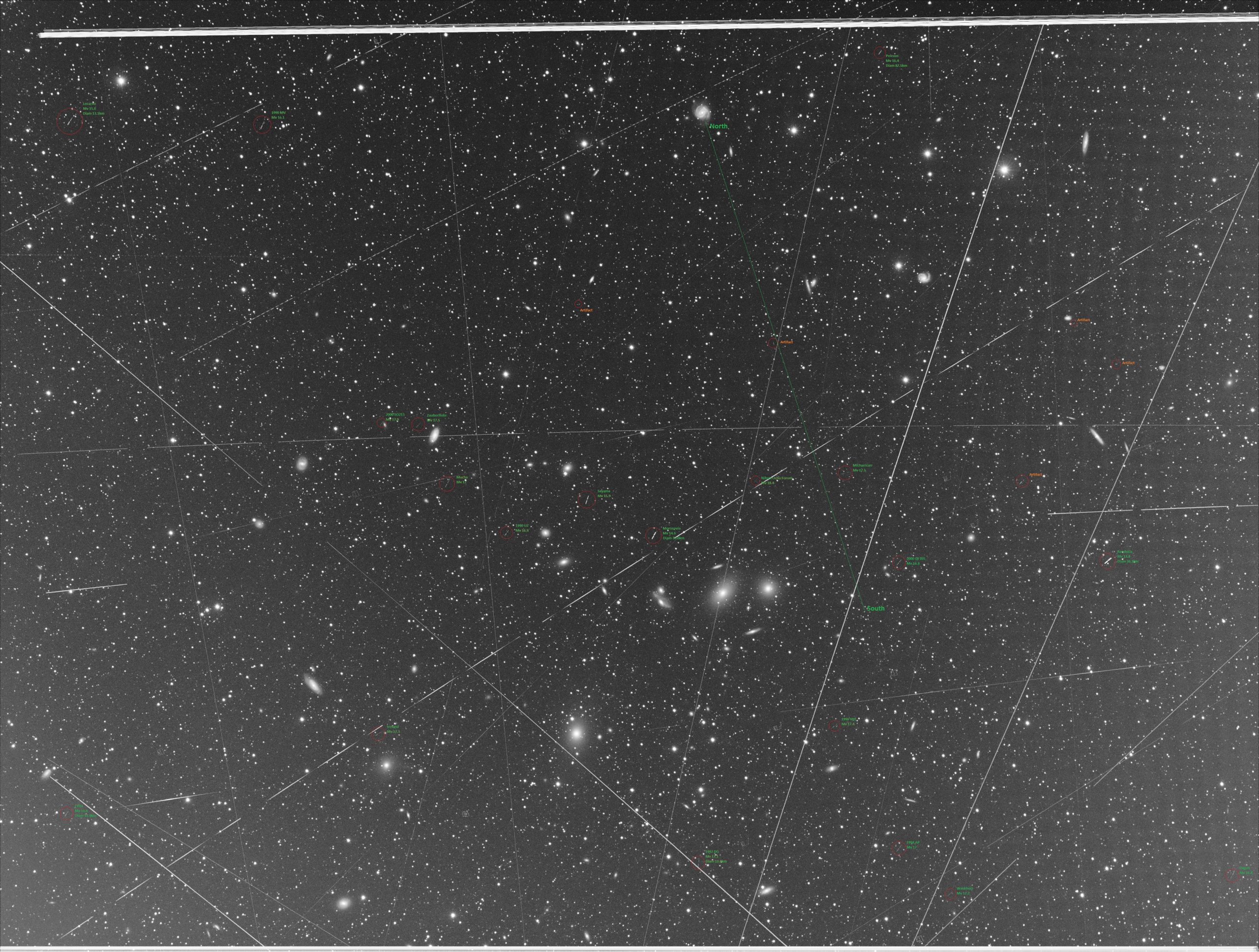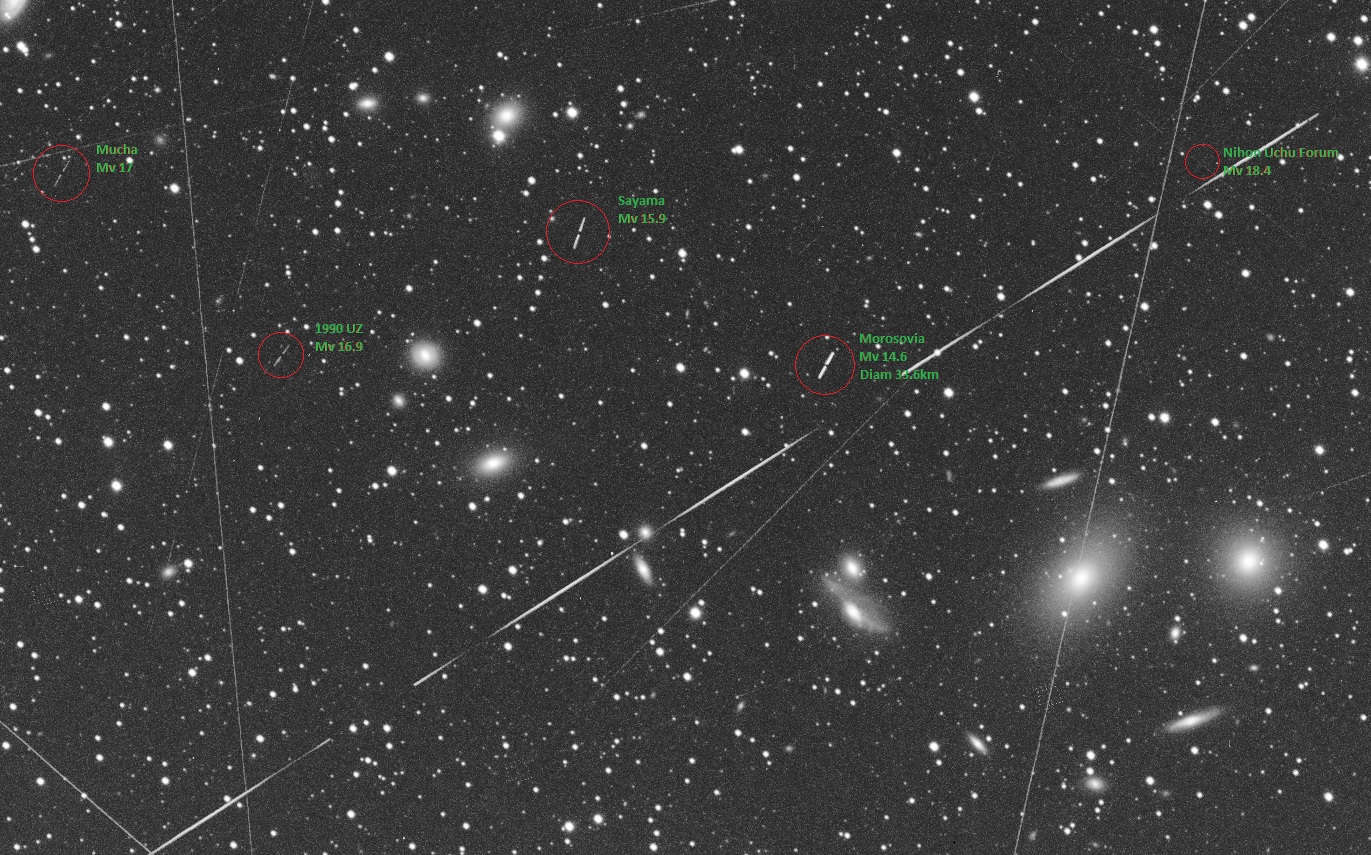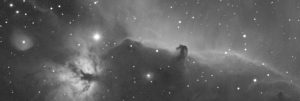5h exposure (Ha:30x600s)
Acquired from the 30th to the 31st of December 2019 with Samyang 135mm
From 09:56 pm to 04:22 am GMT+1

Setup: Samyang 135mm F/2, AZ-EQ6, QHY163m gain=100, QHYCFW2-M, AstroLink 4 mini, QHY5L2M. Software: APT, Stellarium scope, EQ MOD, PHD2
This image has mainly been acquired for future HOO/SHO mix. But the region is also located on the ecliptic plan giving some interest for looking at possible solar system objects. Let’s see if the Ha filter may have some influence on the detectivity of possible asteroids…



